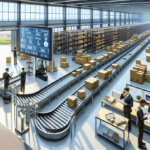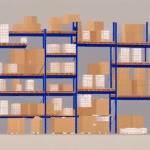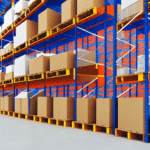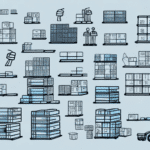Introduction to Physical Distribution
Physical distribution refers to the process of moving products from the manufacturer to the end user through various channels. It encompasses all activities involved in delivering goods to customers, including transportation, warehousing, inventory management, and order fulfillment. In today’s dynamic business environment, physical distribution plays a critical role in achieving customer satisfaction, reducing costs, and gaining a competitive advantage. This article explores the various aspects of physical distribution, its importance, and how businesses can optimize their operations for maximum benefits.
Understanding Physical Distribution
What is Physical Distribution?
Physical distribution involves the transportation and delivery of products from the point of manufacture to the consumer. It is a critical component of supply chain management that requires coordination and integration of all activities associated with delivering products to customers. Physical distribution comprises four key elements:
- Transportation
- Warehousing
- Inventory Management
- Order Fulfillment
These elements work cohesively to ensure that products are delivered efficiently, accurately, and cost-effectively to the end user.
The transportation element involves selecting the most appropriate mode of transportation for the products being delivered, which can include air, sea, rail, or road. The choice depends on factors such as distance, product type, and delivery urgency.
Another critical element is inventory management, which ensures that the right products are available in the right quantities at the right time, minimizing costs associated with holding inventory.
The Importance of Physical Distribution in Business
Physical distribution is pivotal to business success. Companies that can deliver products quickly and reliably gain a significant competitive advantage. Efficient physical distribution ensures on-time delivery, reduces the risk of stockouts, and enhances customer satisfaction. According to a Forbes report, optimized distribution networks can reduce transportation costs by up to 20%.
Moreover, effective physical distribution allows businesses to expand their customer base by reaching remote or hard-to-access areas, tapping into new markets, and increasing revenue streams. It also serves as a tool for marketing and branding, where companies leveraging fast and reliable delivery services can attract new customers and build brand loyalty.
Optimizing Physical Distribution Networks
Improving Your Physical Distribution Network
Businesses can enhance their physical distribution networks by optimizing transportation, warehousing, and order fulfillment processes. Implementing technologies such as Warehouse Management Systems (WMS), Transportation Management Systems (TMS), and order management systems helps automate manual processes, reduce errors, and improve overall efficiency. Partnering with reliable logistics providers who have a strong track record is also essential for efficient distribution.
Best Practices for Effective Physical Distribution
- Optimizing transportation routes and modes
- Ensuring accurate inventory management
- Adopting advanced technologies
- Partnering with reliable logistics providers
- Continuously tracking and improving performance metrics
Implementing these best practices can lead to significant improvements in distribution efficiency and cost-effectiveness.
Measuring the Success of Your Physical Distribution Strategy
To assess the effectiveness of a physical distribution strategy, businesses should track metrics such as delivery performance, inventory accuracy, transportation costs, and customer satisfaction. Regular analysis of these metrics helps identify areas for improvement and optimize operations accordingly.
Modes and Factors Affecting Physical Distribution
Different Modes of Physical Distribution
Various modes of physical distribution include:
- Road Transport: Ideal for short to medium distances and offers flexibility in delivery schedules.
- Air Transport: Suitable for time-sensitive and high-value shipments.
- Sea Transport: Best for transporting large volumes of low-value products over long distances.
- Rail Transport: Effective for bulk goods such as coal and minerals.
- Pipeline Transport: Used for liquids and gases, offering cost-effective and environmentally friendly solutions.
Choosing the right mode depends on factors like product type, distance, cost, and delivery speed.
Factors Affecting Physical Distribution
Several factors influence physical distribution, including:
- Transportation costs
- Mode of transportation
- Distance to market
- Inventory carrying costs
- Demand variability
Additionally, the nature of the product (e.g., perishability, fragility) and the destination (e.g., domestic vs. international) significantly impact distribution decisions. Technological advancements like automation and real-time tracking also play a crucial role in enhancing distribution efficiency.
Cost-Benefit Analysis and Challenges
Cost-Benefit Analysis of Physical Distribution
Conducting a cost-benefit analysis helps businesses determine whether the benefits of their physical distribution network outweigh the costs. Key factors to consider include transportation costs, inventory carrying costs, order fulfillment costs, and customer satisfaction. Additionally, evaluating the environmental impact, such as the carbon footprint of transportation methods, is essential for sustainable operations.
Challenges Faced by Businesses in Physical Distribution
Businesses encounter several challenges in physical distribution, including:
- Transportation delays
- Stockouts and overstock situations
- Demand variability
- Inefficient inventory management
- Lack of supply chain visibility
- Managing returns and reverse logistics
Addressing these challenges requires proactive measures such as leveraging real-time data analytics, implementing supply chain visibility tools, and partnering with specialized service providers to handle reverse logistics efficiently.
Future Trends and Innovations in Physical Distribution
The future of physical distribution is being shaped by several trends and innovations:
- Advanced Technologies: Adoption of drones, autonomous vehicles, and robotics in warehouses enhances efficiency and reduces labor costs.
- Big Data and AI: Utilizing big data analytics and artificial intelligence for better forecasting, route optimization, and demand planning.
- Sustainability: Increasing focus on eco-friendly practices, such as using electric vehicles and optimizing routes to reduce carbon emissions.
- E-commerce Integration: With the rise of online shopping, businesses are developing specialized packaging and delivery options like same-day or next-day delivery.
Staying abreast of these trends and integrating relevant technologies and practices is crucial for businesses to remain competitive in the evolving physical distribution landscape.
Case Studies and Comparative Analysis
Case Studies on Successful Physical Distribution Strategies
- Amazon: Leveraged advanced technologies such as robotics and artificial intelligence to enhance its order fulfillment and delivery processes, resulting in faster delivery times and increased efficiency.
- Walmart: Implemented a hub-and-spoke distribution network that reduces transportation costs and improves inventory management by centralizing distribution centers.
Comparison Between Physical and Digital Distribution
Physical and digital distribution each have their unique advantages and challenges:
- Physical Distribution: Best suited for products requiring immediate delivery, high customization, or a personal touch. It ensures tangible product delivery and can enhance customer experience through reliable service.
- Digital Distribution: Ideal for products that can be delivered electronically, such as music, books, and software. It offers instant delivery and reduces shipping costs but lacks the tangible aspect of physical products.
Both distribution modes are essential for comprehensive business strategies, and businesses must optimize each to meet diverse customer demands effectively.
Conclusion: The Relevance of Physical Distribution in Today’s Business World
Despite the surge in e-commerce and digital distribution, physical distribution remains a critical component of business success. Efficient physical distribution enhances customer satisfaction, reduces operational costs, and provides a competitive edge. As consumer expectations evolve and global markets expand, businesses must continuously optimize their physical distribution networks to adapt to changing demands. By addressing challenges proactively and embracing future trends and innovations, companies can ensure their physical distribution strategies remain relevant and effective in today's fast-paced business environment.






















